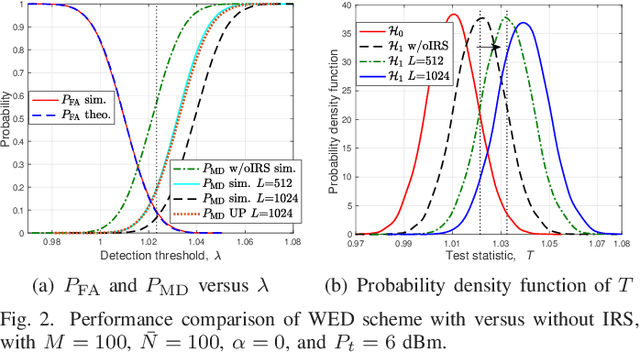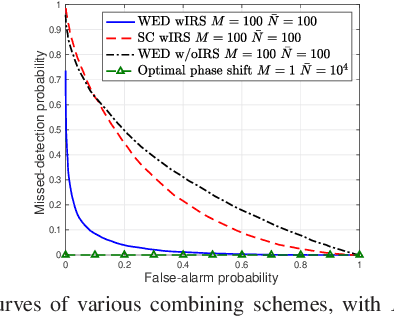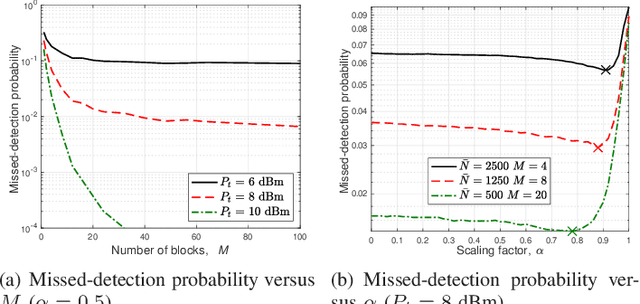Shaoe Lin
Intelligent Reflecting Surface-Aided Spectrum Sensing for Cognitive Radio
Feb 05, 2022



Abstract:Spectrum sensing is a key enabling technique for cognitive radio (CR), which provides essential information on the spectrum availability. However, due to severe wireless channel fading and path loss, the primary user (PU) signals received at the CR or secondary user (SU) can be practically too weak for reliable detection. To tackle this issue, we consider in this letter a new intelligent reflecting surface (IRS)-aided spectrum sensing scheme for CR, by exploiting the large aperture and passive beamforming gains of IRS to boost the PU signal strength received at the SU to facilitate its spectrum sensing. Specifically, by dynamically changing the IRS reflection over time according to a given codebook, its reflected signal power varies substantially at the SU, which is utilized for opportunistic signal detection. Furthermore, we propose a weighted energy detection method by combining the received signal power values over different IRS reflections, which significantly improves the detection performance. Simulation results validate the performance gain of the proposed IRS-aided spectrum sensing scheme, as compared to different benchmark schemes.
* Accepted by IEEE Wireless Communications Letters (5 pages, 4 figures)
Intelligent Reflecting Surface-Aided LEO Satellite Communication: Cooperative Passive Beamforming and Distributed Channel Estimation
Jan 09, 2022



Abstract:We consider in this paper a new intelligent reflecting surface (IRS)-aided LEO satellite communication system, by utilizing the controllable phase shifts of massive passive reflecting elements to achieve flexible beamforming, which copes with the time-varying channel between the high-mobility satellite (SAT) and ground node (GN) cost-effectively. In particular, we propose a new architecture for IRS-aided LEO satellite communication where IRSs are deployed at both sides of the SAT and GN, and study their cooperative passive beamforming (CPB) design over line-of-sight (LoS)-dominant single-reflection and double-reflection channels. Specifically, we jointly optimize the active transmit/receive beamforming at the SAT/GN as well as the CPB at two-sided IRSs to maximize the overall channel gain from the SAT to each GN. Interestingly, we show that under LoS channel conditions, the high-dimensional SAT-GN channel can be decomposed into the outer product of two low-dimensional vectors. By exploiting the decomposed SAT-GN channel, we decouple the original beamforming optimization problem into two simpler subproblems corresponding to the SAT and GN sides, respectively, which are both solved in closed-form. Furthermore, we propose an efficient transmission protocol to conduct channel estimation and beam tracking, which only requires independent processing of the SAT and GN in a distributed manner, thus substantially reducing the implementation complexity. Simulation results validate the performance advantages of the proposed IRS-aided LEO satellite communication system with two-sided cooperative IRSs, as compared to various baseline schemes such as the conventional reflect-array and one-sided IRS.
 Add to Chrome
Add to Chrome Add to Firefox
Add to Firefox Add to Edge
Add to Edge